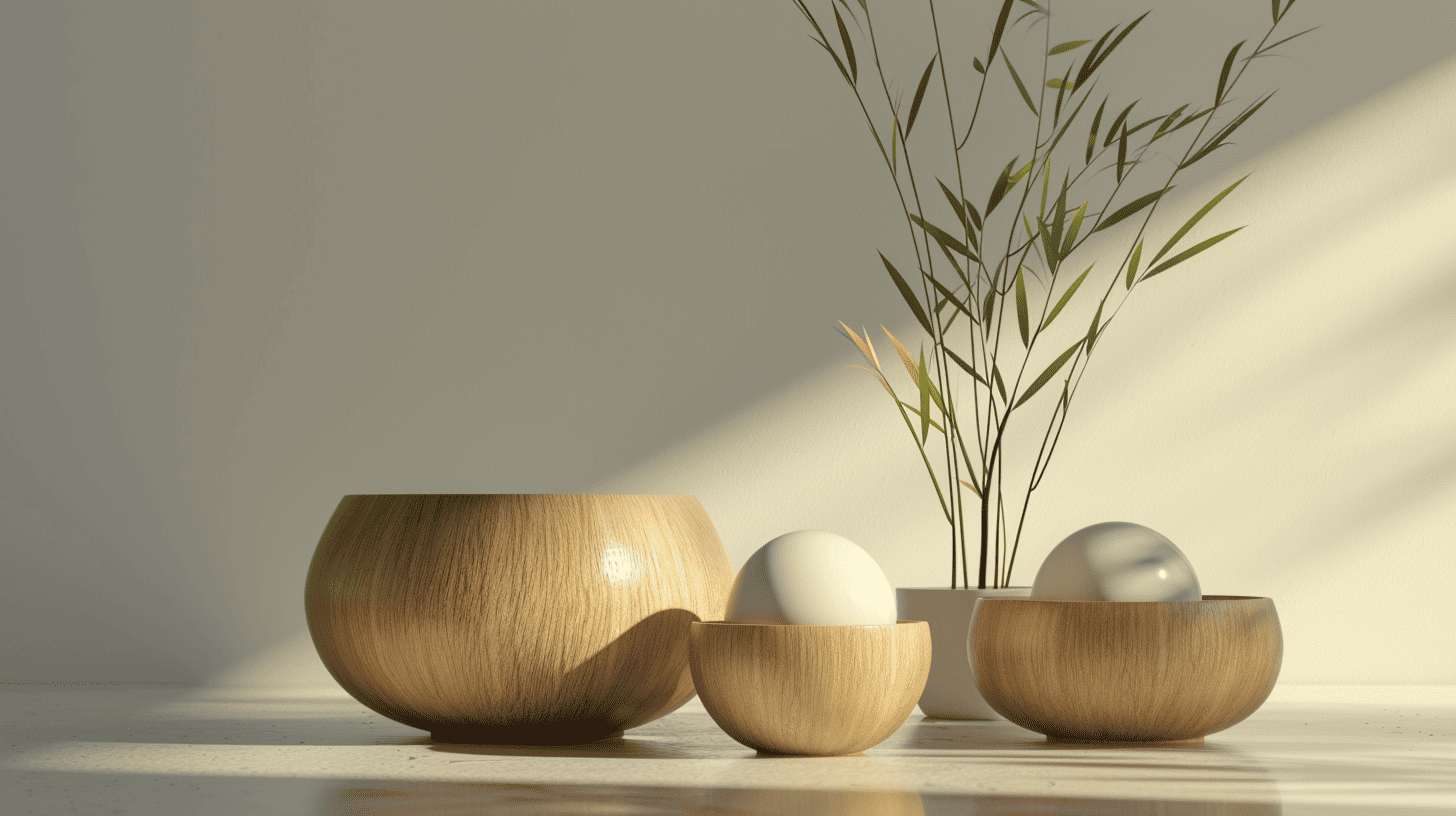Implementing sustainable product design is vital in today’s world, as the need to reduce waste and minimize environmental impact becomes increasingly pressing. By incorporating sustainable practices and adopting eco-friendly methods, companies can create a sustainable future for both their business and the planet. In this article, we will explore 11 methods for designing products with sustainability in mind, to ensure less waste and a more eco-conscious approach to product development.
The steps for achieving sustainable product design for less waste can be broken down into different categories, including material selection, product lifecycle assessment, energy efficiency optimization, and various other sustainable practices. By adopting these methods, companies can create innovative sustainable products that not only meet the demands of the market but also make a positive impact on the environment.
Key Takeaways
- Designing with sustainability in mind helps reduce waste and minimize environmental impact.
- Selecting eco-friendly and recyclable materials is a crucial aspect of sustainable product design.
- Understanding the product lifecycle can aid in creating products that have less waste and longer lifespans.
- Creating energy-efficient products is fundamental in promoting a sustainable future.
- Collaboration within the industry and beyond is vital for fostering a circular economy and advancing sustainable practices.
11 Methods for Sustainable Product Design
Here is a list of 11 methods for sustainable product design, including approaches, tips, and statistics:
1. Life Cycle Assessment
- Conduct a life cycle assessment to understand the environmental impacts of a product across its entire life cycle, from raw material extraction to end-of-life disposal.
- This allows designers to identify hotspots for improvement. For example, 80% of a product’s emissions may be locked in at the design stage.
2. Circular Design
- Design products for a circular economy by incorporating features that extend product lifetime through durability, repair, reuse or remanufacturing.
- The global market for circular (bio-based) materials is projected to increase by 10% annually.
3. Material Selection
- Select eco-friendly, non-toxic and sustainably-sourced materials such as recycled, renewable or biodegradable alternatives.
- 73% of consumers say companies have a responsibility regarding the environment, and 43% refuse to buy from companies with negative environmental policies.
4. Manufacturing Processes
- Minimize waste, emissions and resource consumption in manufacturing by analyzing energy and materials flow.
- Implement closed-loop manufacturing systems and collaborate closely with suppliers.
5. Product Energy Efficiency
- Design products to maximize energy efficiency during use phase to lower environmental footprint.
- The average website produces 1.76 grams of CO2 per page view.
6. Optimized Packaging & Distribution
- Reduce packaging waste by using recyclable, biodegradable or no packaging at all.
- Streamline distribution networks and transportation modes.
7. Design for Disassembly
- Allow easy disassembly of products for maintenance, reuse, remanufacturing and recycling.
- Make components easy to separate by material type to improve recyclability.
8. Consumer Engagement
- Encourage sustainable use and disposal of products through consumer education and incentives.
- 88% of consumers expect brands to implement sustainability practices.
9. Sustainable Innovation Culture
- Foster a culture of sustainability, creativity and innovation to uncover new solutions.
- Develop skills in systems thinking and collaboration.
10. Measurement & Reporting
- Track progress through key metrics aligned to sustainability goals across product life cycle.
- 80% of leading companies incorporate sustainability reporting.
11. Continual Improvement
- Continually refine efforts as new information, technology and sustainable solutions become available.
- What is considered sustainable changes over time so products must evolve.
Understanding Sustainable Product Design
Sustainable product design is an inclusive approach that encompasses the efficient use of resources, while reducing harm to the environment and ecological systems. By integrating environmental and social considerations into the design and creation of products, sustainability becomes an essential element in the product development process.
Core77: Utilize streamlined Life Cycle Assessment (LCA) and design thinking in a holistic manner as a prospective tool, framing the problem of unsustainability and connecting LCA results with day-to-day practices for meaningful decision-making.
What is Sustainable Product Design?
Sustainable product design is a comprehensive process that factors in environmental considerations such as energy efficiency, the use of renewable resources, and social aspects like labor standards and health impacts into the design and development of products. The integration of economic considerations ensures that sustainable design principles are not only eco-friendly but also economically viable, contributing to the long-term success of businesses and industries.
The Role of Designers in Environmental and Social Impacts
Designers play a pivotal role in sustainable product design, making crucial decisions regarding inputs, material processing, product lifecycle, and end-of-life options. Acknowledging that approximately 80% of product ecological impacts are determined at the design stage underscores the importance of the decisions product designers make, which directly influence the environmental footprint of the products.
By minimizing waste generation and harnessing renewable materials, designers can push for sustainable design early in the design process, setting a positive trajectory that locks in benefits from the outset and contributes to the overall well-being of the planet.
Strategies for Eco-Friendly Material Selection
Embracing sustainable material selection is a crucial step in creating eco-friendly products. By choosing non-toxic, abundantly available resources and ensuring the materials used are recyclable or biodegradable, product designers can make significant advancements in sustainability efforts. Let us explore some essential guidelines for selecting eco-conscious materials.
Choosing Non-Toxic, Abundant Materials
Opting for non-toxic, rapidly renewable, and abundant resources is an effective strategy for reducing the environmental impact of products. For instance, bamboo, cotton, natural rubber, and cork are sustainable materials that are quickly replenished and pose minimal harm to the environment. These materials not only reduce waste but also promote a sustainable economy.
Emphasizing Recyclability and Biodegradability
Choosing materials with recyclable components and biodegradable packaging is essential for minimizing waste and decreasing the burden on landfills. By incorporating recycled or compostable materials in product designs, the conservation of energy and natural resources is significantly improved. Using recyclable materials also has the added benefit of reducing production costs while contributing to sustainability improvements.
| Eco-Design Strategy | Examples of Materials | Benefits |
|---|---|---|
| Non-toxic materials | Organic cotton, natural rubber | No harmful chemicals, safe for consumers and the environment |
| Abundantly available resources | Bamboo, cork | Rapidly renewable, reduced deforestation |
| Recyclable components | Post-consumer recycled plastics, metals | Energy conservation, reduced waste in landfills |
| Biodegradable packaging | Compostable plastics, paper | Decomposes naturally, reduces pollution and waste |
Implementing these eco-design strategies is instrumental in achieving a greener future and ensuring the products we create are environmentally responsible. A conscious effort to select sustainable materials is the backbone of better, responsibly designed products that have a minimized impact on the Earth.
The Significance of Product Lifecycle

When it comes to sustainable product design, every stage of a product’s life cycle, from raw material acquisition to disposal, should be thoroughly assessed for potential improvements in energy consumption and waste reduction. By implementing innovative concepts such as Cradle to Cradle and Design for Disassembly, designers can effectively manage resources and reduce the overall environmental impact of their products.
Assessing Energy Consumption from Raw Materials to Disposal
Product life cycle assessment is a crucial method for understanding and improving the environmental performance of products. By evaluating the energy required during the acquisition of raw materials, manufacturing, transportation, usage, and disposal, designers can identify opportunities for optimization and waste reduction. This comprehensive approach allows them to make better informed decisions throughout the product development process, ultimately promoting more sustainable practices.
Approximately 80% of a product’s ecological impact is determined at the design stage.
Implementing Cradle to Cradle and Design for Disassembly Concepts
Incorporating circular design strategies like Cradle to Cradle and Design for Disassembly into the product design process can significantly contribute to the reduction of a product’s environmental footprint. Cradle to Cradle envisions products that can be used repeatedly, either by being recycled or repurposed after their initial use. This model promotes the perpetual circulation of resources, extending the value of materials, and minimizing waste generation.
On the other hand, Design for Disassembly focuses on creating products that are easy to disassemble for reuse, repair, or recycling. This concept helps to ensure that valuable materials and components can have a second life and be integrated into new products, thus decreasing reliance on virgin materials and reducing waste. Together, these approaches can play a critical role in achieving a more circular, sustainable economy.
- Identify opportunities for optimization and waste reduction throughout the product lifecycle
- Implement Cradle to Cradle to envision products with an extended second life
- Simplify disassembly for reuse, repair, or recycling with Design for Disassembly
Designing for Energy Efficiency and Minimal Resource Use

Energy efficiency is the cornerstone of sustainable product design, and it can be achieved through the incorporation of energy-saving features and the adoption of lightweight and low-waste materials. By using materials with low embodied energy and embracing sustainable production methods, designers can create high-quality products with minimal resource use and reduced environmental footprints.
Incorporation of Energy-Saving Features
One method to create energy-efficient products is to incorporate energy-saving design features that deliver uncompromised performance while using less energy. These features can include energy-efficient motors for appliances, LED lighting technology, and the integration of smart home technologies that manage energy consumption effectively. Incorporating these features offers a significant environmental benefit, as products consume less energy during their lifecycle, ultimately reducing the use of global resources.
Adoption of Lightweight and Low-Waste Materials
Lightweighting, or designing with less material, is a beneficial approach across the entire product lifecycle. Techniques such as utilizing geometry to amplify strength while using minimal materials or incorporating hollow components can achieve this goal. To help illustrate the benefits of lightweighting, consider the following table, which compares the energy consumption and environmental impact of conventional and lightweight materials:
| Material | Embodied Energy (MJ/kg) | Environmental Impact (Global Warming Potential, kg CO2 eq.) |
|---|---|---|
| Conventional Aluminum | 155 | 12 |
| Recycled Aluminum | 19 | 1.5 |
| Conventional Steel | 35 | 2.7 |
| Recycled Steel | 21 | 1.3 |
| Bamboo | 2 | 0.07 |
As evidenced in the table, opting for recycled materials or rapidly renewable resources such as bamboo can significantly reduce the embodied energy and environmental impact of the products created. By embracing lightweighting strategies and using low-waste materials, designers can minimize resource consumption without compromising the quality or functionality of their products, ultimately achieving a more sustainable, energy-efficient design.
Bringing it All Together: The Big Picture of Sustainable Product Design

Embracing sustainable design involves a holistic approach, taking into account not only the environmental, but also the social and economic dimensions. Designers must be conscious of the environmental impacts of products across their life cycle, ensuring the creation of products that deliver higher value with lower resource consumption. By following circular economy principles and incorporating life cycle thinking, we can transform our production and consumption models to exhibit sustainable, regenerative, and circular characteristics.
Some of the key strategies in sustainable product design include Design for Disassembly, Longevity, Reusability, Dematerialization, and Modularity. These are examples of design for x considerations that promote circular thinking and help establish a sustainable economy. By applying these principles, designers have the tools to foster novel ways of satisfying needs while aligning with the planet’s natural systems and contributing to a sustainable economy.
“Sustainable product design is not just an isolated concept but an integrated discipline that considers environmental, social, and economic dimensions.”
As designers, it is important for us to understand and adopt the concept of systems thinking. This means recognizing that a product is not simply an independent creation but rather a part of a much larger system. By combining regenerative design methods and broader design thinking, we can develop innovative, eco-conscious products that continue to meet the needs of customers while also benefiting the environment.
| Design Principle | Description |
|---|---|
| Design for Disassembly | Products should be easy to disassemble, enabling efficient recycling or repurposing of components. |
| Longevity | Creating products with durable materials, ensuring a longer lifespan and reducing the need for frequent replacements. |
| Reusability | Designing products with the intention of being reused, either through refilling, refurbishment, or repurposing. |
| Dematerialization | Reducing the overall amount of materials used in a product, lowering its environmental footprint. |
| Modularity | Designing components that can be easily replaced or updated, allowing for customization and prolonging product life. |
In conclusion, the big picture of sustainable product design involves embracing a comprehensive perspective of environmental, social, and economic factors. By recognizing the value in circular economy principles, life cycle thinking, and systems thinking, we can create innovative, eco-conscious products that are not only more appealing to consumers but also empower a sustainable future for our planet.
Conclusion on Sustainable Product Design for Less Waste
In conclusion, the path towards sustainable product development involves continuous monitoring, adaptation of sustainable design practices, and collaboration. The collective efforts of individuals, organizations, and industries play a crucial role in promoting product sustainability and minimizing waste. As we strive for a greener future, businesses must remain committed to assessing their environmental impact, adapting sustainable practices, and working together for a more sustainable and circular economy.
Monitoring and Adapting Sustainable Practices
To ensure that sustainability goals are met, product developers and companies need to keep a close eye on the environmental impact of their products post-production. By diligently tracking their progress and adapting practices accordingly, they can align their designs with the principles of sustainability. Embracing change and continuous improvement will help in fostering a healthier, cleaner world for generations to come.
Collaborating for a Circular Economy
Collaborative sustainability efforts with various stakeholders, including educational institutions, industry associations, and other corporations, can significantly enrich sustainable initiatives. By establishing partnerships that focus on sustainable research, resource sharing, and product testing, businesses create an inclusive environment for change. As a result, a sustainable, circular economy becomes more tangible, driving forward an era of circular products designed with the well-being of the planet and its inhabitants as the ultimate priority.
FAQ on Sustainable Design
Q: What is sustainable product design?
A: Sustainable product design focuses on creating products that minimize environmental impact, promote social responsibility, and support economic viability throughout the life cycle of a product.
Q: What are the key elements of sustainable product design?
A: The key elements of sustainable product design include sustainable materials, design choices, manufacturing processes, and product stewardship.
Q: How can sustainable design approaches improve product sustainability?
A: Sustainable design approaches can improve product sustainability by incorporating strategies for sustainable design, considering the life cycle of a product, and making conscious design choices that reduce environmental impact.
Q: What is the role of product stewardship in sustainable product design?
A: Product stewardship plays a crucial role in sustainable product design by guiding the responsible management of a product throughout its life cycle, from design to disposal, to minimize environmental impact and promote sustainability.
Q: How does design thinking contribute to sustainable product design?
A: Design thinking contributes to sustainable product design by fostering innovative and environmentally friendly design means, encouraging creative solutions that support sustainability, and promoting a holistic approach to product development.
Q: What are some strategies for sustainable design that can be incorporated into product design?
A: Some strategies for sustainable design that can be incorporated into product design include modular design, packaging design, materials and manufacturing choices that reduce waste, and designing for sustainability throughout the product’s life cycle.
Q: How can companies create products and services with sustainability in mind?
A: Companies can create products and services with sustainability in mind by integrating sustainable design approaches, considering the environmental impact of their choices, and implementing strategies for sustainable product design in the design phase.
Q: Why is sustainable product design important for the environment and society?
A: Sustainable product design is important for the environment and society as it enables the creation of products that last longer, minimize waste, and contribute to a healthier and more sustainable future for all.
Q: What are some design decisions that support sustainable product design?
A: Some design decisions that support sustainable product design include choices in materials, manufacturing processes, packaging design, and design for sustainability, aiming to reduce environmental impact and promote sustainability.
Q: How can design for sustainability guide the development of more environmentally friendly products?
A: Design for sustainability can guide the development of more environmentally friendly products by integrating sustainable design principles, considering the life cycle of a product, and implementing sustainable design approaches that prioritize environmental and social responsibility.





Leave a Reply